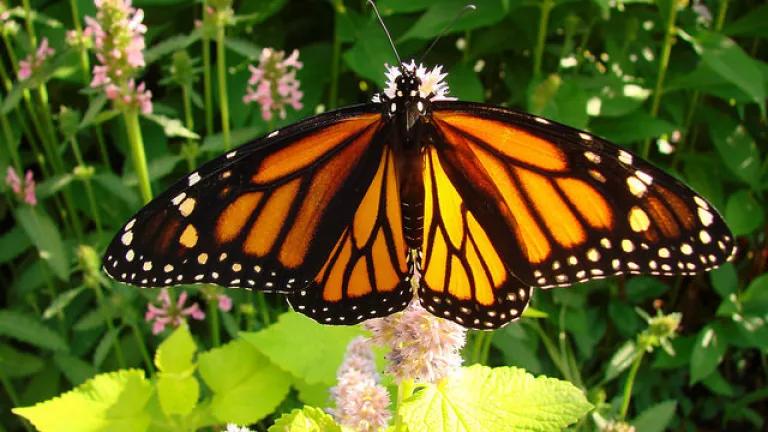Monarch Butterflies Struggle as Feds Delay Protection
In the last six years, many voluntary efforts have been made to help boost monarch populations. Now the butterflies will have to wait even longer to receive more help.

In response to a petition filed six years ago, the U.S. Fish and Wildlife Service just announced that monarch butterflies qualify for protections under the Endangered Species Act. . . but that they will not provide those protections now due to other priorities (also known as a ‘warranted but precluded’ finding).
In the last six years, many voluntary efforts have been made to help boost monarch populations—including milkweed planting (the plant that monarchs need to reproduce) at the federal and state level as well as numerous private sector initiatives. However, despite these efforts, monarchs continue to struggle with the western population nearing imminent extinction and the eastern population continuing to hover at dangerously low numbers. Now the butterflies will have to wait even longer to receive more help.
Monarch butterflies have long been a constant presence of many people’s summer experience as the butterflies travel yearly from the forests of Mexico northward across the United States before heading back to Mexico each fall. Once abundant, monarchs numbered up to nearly 1 billion, and generations of kids and teachers enjoyed raising them in their classrooms and learning about their life cycle. But over the course of last two decades, the number of monarch butterflies has plummeted by more than 85%. This decline has coincided with the introduction of genetically modified crops that are resistant to the application of glyphosate, commonly known as Roundup, which has allowed for the eradication of milkweed in the agricultural Midwest—an area that is key to the monarch’s migration. While other factors like climate change, other nectar sources, and the condition of their overwintering habitat in Mexico may also contribute to the decline, the loss of milkweed is one of the leading factors.
Monarchs are capable of rebounding, but in order to do so they need the right conditions—including abundant milkweed and other nectar sources. In addition to planting milkweed and other pollinator habitat, we need to scale back the use of agricultural pesticides like glyphosate, Enlist Duo, Dicamba and neonicotinoids—all of which are pervasive in traditional agriculture these days. There is a burgeoning movement by some farmers to move towards regenerative agricultural practices that work with nature instead of against it. This is the direction we need to be heading in. As people, we are dependent on farming and agriculture for the production of our food. But our food is dependent on insects such as pollinators like monarch butterflies and bees. We have to support solutions that allow both farming and biodiversity to thrive.
Today’s decision is an acknowledgement that monarch butterflies are in serious trouble, but it also delays critically needed action to help rescue the species. An Endangered Species Act listing would require the U.S. Fish and Wildlife Service to develop a coordinated plan for the recovery of monarch butterflies. It is plain to see that efforts over the past six years have not been enough to secure the population, and we will need to do much more if we want to ensure that future generations of kids can continue to experience the joy and wonder of watching monarchs migrate across our country each year.




